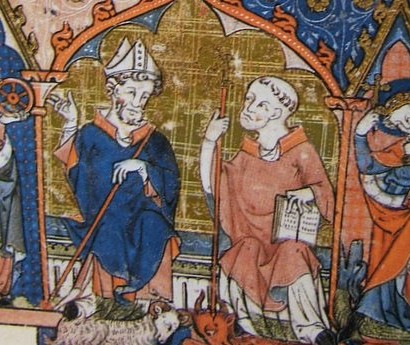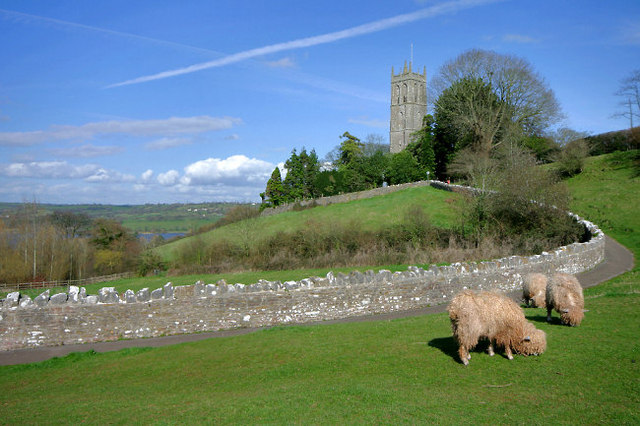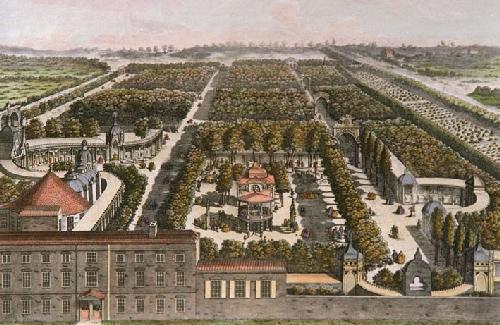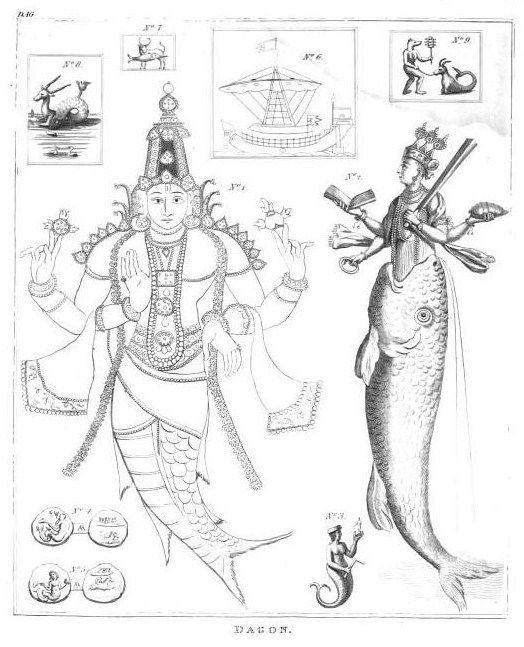|
Isaac Taylor (engraver)
Isaac Taylor (1730–1807) was an English engraver. Life The son of William Taylor (b. 1693), a versatile artisan, and the writer Ann Taylor (née Cooke), he was born on 13 December 1730 in the parish of St. Michael in Bedwardine, in the city of Worcester. In the early part of his career he worked successively as a brassfounder, a silversmith, and a surveyor. About 1752 he made his way to London, and found employment first at a silversmith’s, and then with Thomas Jefferys the cartographer, at the corner of St Martin's Lane. Under his guidance he executed a number of plates for the '' Gentleman's Magazine''. Taylor moved on to book illustration, working on William Owen Pughe's ''Dictionary'' and Andrew Tooke's ''Pantheon''. Soon after its incorporation, in January 1765, Taylor was admitted a fellow of the Society of Artists, and in 1774 he was appointed secretary as successor to John Hamilton, being the third to hold that post. At the time he joined the society Taylor was li ... [...More Info...] [...Related Items...] OR: [Wikipedia] [Google] [Baidu] |
Worcester, England
Worcester ( ) is a cathedral city in Worcestershire, England, of which it is the county town. It is south-west of Birmingham, north-west of London, north of Gloucester and north-east of Hereford. The population was 103,872 in the 2021 Census. The River Severn flanks the western side of the city centre. It is overlooked by Worcester Cathedral. Worcester is the home of Royal Worcester, Royal Worcester Porcelain, composer Edward Elgar, Lea & Perrins, makers of traditional Worcestershire sauce, the University of Worcester, and ''Berrow's Worcester Journal'', claimed as the world's oldest newspaper. The Battle of Worcester in 1651 was the final battle of the English Civil War, during which Oliver Cromwell's New Model Army defeated Charles II of England, King Charles II's Cavalier, Royalists. History Early history The trade route past Worcester, later part of the Roman roads in Britain, Roman Ryknild Street, dates from Neolithic times. It commanded a ford crossing over the Rive ... [...More Info...] [...Related Items...] OR: [Wikipedia] [Google] [Baidu] |
John Langhorne (poet)
John Langhorne was an English clergyman, poet, translator, editor and author. He was born in March 1735 in Winton, a village in the former Westmorland, now the Eden District of Cumbria: ::In Eden's vale where early fancy wrought ::Her wild embroidery on the ground of thought. He died on 1 April 1779, in Blagdon, Somerset. Life John Langhorne's father was also a clergyman and died when his son was four. His mother made sure he had a school education, first in Winton village and then in Appleby, but there were not sufficient funds to send him to university. From the age of 18, he supported himself by teaching at various places in Yorkshire and finally was appointed tutor to the nine sons of Robert Cracroft at Hackthorn Hall in Lincolnshire. Having taken deacon's orders, he left in 1761 and, after a curate's appointment in Dagenham, became curate and lecturer at St. John's, Clerkenwell in 1764, and was appointed assistant preacher at Lincoln's Inn at the end of the following year. ... [...More Info...] [...Related Items...] OR: [Wikipedia] [Google] [Baidu] |
1730 Births
Year 173 ( CLXXIII) was a common year starting on Thursday (link will display the full calendar) of the Julian calendar. At the time, it was known as the Year of the Consulship of Severus and Pompeianus (or, less frequently, year 926 ''Ab urbe condita''). The denomination 173 for this year has been used since the early medieval period, when the Anno Domini calendar era became the prevalent method in Europe for naming years. Events By place Roman Empire * Gnaeus Claudius Severus and Tiberius Claudius Pompeianus become Roman Consuls. * Given control of the Eastern Empire, Avidius Cassius, the governor of Syria, crushes an insurrection of shepherds known as the Boukoloi. Births * Maximinus Thrax ("the Thracian"), Roman emperor (d. 238) * Mi Heng, Chinese writer and musician (d. 198) Deaths * Donatus of Muenstereifel, Roman soldier and martyr (b. AD 140 Year 140 ( CXL) was a leap year starting on Thursday (link will display the full calendar) of the Julian cal ... [...More Info...] [...Related Items...] OR: [Wikipedia] [Google] [Baidu] |
Vauxhall Gardens
Vauxhall Gardens is a public park in Kennington in the London Borough of Lambeth, England, on the south bank of the River Thames. Originally known as New Spring Gardens, it is believed to have opened before the Restoration of 1660, being mentioned by Samuel Pepys in 1662. From 1785 to 1859, the site was known as Vauxhall, a pleasure garden and one of the leading venues for public entertainment in London from the mid-17th century to the mid-19th century. The Gardens consisted of several acres of trees and shrubs with attractive walks. Initially entrance was free, with food and drink being sold to support the venture. It was accessed by boat until the erection of Vauxhall Bridge in the 1810s. The area was absorbed into the metropolis as the city expanded in the early to mid-19th century. The site became Vauxhall Gardens in 1785 and admission was charged for its attractions. The Gardens drew enormous crowds, with its paths being noted for romantic assignations. Tightrope wal ... [...More Info...] [...Related Items...] OR: [Wikipedia] [Google] [Baidu] |
Anker Smith
Anker Smith (1759–1819) was an English engraver. Life Smith was born in Cheapside, London, where his father was a silk merchant. He was educated at Merchant Taylors' School, and at first articled to an uncle named Hoole, a solicitor; but he transferred to James Taylor, an engraver and younger brother to Isaac Taylor, with whom he remained until 1782. Subsequently, he became an assistant to James Heath, and then one of the leading English line engravers. Smith died of apoplexy on 23 June 1819. Works In 1787 Smith found his first independent employment with John Bell, for whose series of ''British Poets'' he engraved many of the illustrations. Through his relative John Hoole he became known to John Boydell, who commissioned him to engrave James Northcote's picture ''Death of Wat Tyler''; the print was published in 1796, and earned for him election as an associate of the Royal Academy in the following year. In 1798 Smith executed a large plate from Leonardo da Vinci's c ... [...More Info...] [...Related Items...] OR: [Wikipedia] [Google] [Baidu] |
China Painter
China painting, or porcelain painting, is the decoration of glazed porcelain objects such as plates, bowls, vases or statues. The body of the object may be hard-paste porcelain, developed in China in the 7th or 8th century, or soft-paste porcelain (often bone china), developed in 18th-century Europe. The broader term ceramic painting includes painted decoration on lead-glazed earthenware such as creamware or tin-glazed pottery such as maiolica or faience. Typically the body is first fired in a kiln to convert it into a hard porous biscuit or bisque. Underglaze decoration may then be applied, followed by glaze, which is fired so it bonds to the body. The glazed porcelain may then be painted with overglaze decoration and fired again to bond the paint with the glaze. Most pieces use only one of underglaze or overglaze painting, the latter often being referred to as "enamelled". Decorations may be applied by brush or by stenciling, transfer printing, lithography and screen printing ... [...More Info...] [...Related Items...] OR: [Wikipedia] [Google] [Baidu] |
John Howard Hinton
John Howard Hinton (23 March 1791 – 11 December 1873) was an English author and Baptist minister who published, along with many other works, ''The History and Topography of the United States of North America'' together with his brother Isaac Taylor Hinton (1799-1847). He is the father of surgeon James Hinton and grandfather of mathematician and science fiction author Charles Howard Hinton. Life John Howard Hinton was born in Oxford in 1791 to James Hinton (1761–1823) and Ann Hinton. His Father, James Hinton, was a pastor in Oxford, and ran a school. Hinton was taught at his father's school where he became friends with Edward Steane.Rosemary Chadwick, ‘Steane, Edward (1798–1882)’, Oxford Dictionary of National Biography, Oxford University Press, 200accessed 31 July 2014/ref> Hinton first preached in Reading, afterwards became pastor of a Baptist church in London, and was distinguished as an independent and original preacher, and a zealous advocate for liberty in rel ... [...More Info...] [...Related Items...] OR: [Wikipedia] [Google] [Baidu] |
Hatton Garden
Hatton Garden is a street and commercial zone in the Holborn district of the London Borough of Camden, abutting the narrow precinct of Saffron Hill which then abuts the City of London. It takes its name from Sir Christopher Hatton, a favourite of Queen Elizabeth I, who established a mansion here and gained possession of the garden and orchard of Ely Place, the London seat of the Bishops of Ely. It remained in the Hatton family and was built up as a stylish residential development in the reign of King Charles II. For some decades it often went, outside of the main street, by an alternative name St Alban's Holborn, after the local church built in 1861. St Etheldreda's Church in Ely Place, all that survives of the old Bishop's Palace, is one of only two remaining buildings in London dating from the reign of Edward I. It is one of the oldest churches in England now in use for Roman Catholic worship, which was re-established there in 1879. The red-brick building now known as Wr ... [...More Info...] [...Related Items...] OR: [Wikipedia] [Google] [Baidu] |
Isaac Taylor (1759–1829)
Isaac Taylor (1759–1829) of Ongar was an English engraver and writer of books for the young. Early life The son of Isaac Taylor (1730–1807) by his wife Sarah, daughter of Josiah Jefferys of Shenfield, Essex, he was born in London on 30 January 1759. With his elder brother Charles Taylor, after some education at Brentford grammar school, he was brought up as an engraver in the studio of his father, and worked both in landscape and portraiture. During his apprenticeship the plates for Abraham Rees's edition of '' Chambers's Cyclopaedia'' were executed under his superintendence at his father's establishment, and he met Rees. In 1781 he commissioned Richard Smirke to paint four small circular subjects representing morning, noon, evening, and night, which he engraved and published; and two years later he painted and engraved a set of views on the Thames near London. In 1783 he moved from Islington to Red Lion Street, Holborn, and in June 1786 he left London for Lavenham in ... [...More Info...] [...Related Items...] OR: [Wikipedia] [Google] [Baidu] |
Charles Taylor (1756–1823)
Charles Taylor (1756–1823) was an English engraver, known also as a man of letters and biblical scholar. Life Born in the parish of Shenfield in Essex on 1 February 1756, he was the son of Isaac Taylor by his wife, Sarah Hackshaw, daughter of Josiah Jefferys of Shenfield. He was educated at a grammar school at Brentwood in Essex, and on completing his fifteenth year was articled to his father as an engraver, and studied under Francesco Bartolozzi. In 1777 he visited Paris. Taylor went into business in London as an engraver. In 1780 his house was burnt down during the Gordon riots, and he moved to Holborn. Later he lived in Hatton Garden, where he died on 13 November 1823, and was buried in Bunhill Fields. Works Taylor initially adopted the standard practice for engravers, of executing ornamental proofs. These were for the most part after Robert Smirke and Angelica Kauffman. His main artistic publications were: * ''Picturesque Beauties of Shakespeare'', London, 1783; the ... [...More Info...] [...Related Items...] OR: [Wikipedia] [Google] [Baidu] |
Cornelius Cayley
Cornelius Cayley (23 April 1727 – 1779) was a British religious writer and preacher. Family He was a great-grandson of Sir William Cayley, the first of the Cayley baronets. His parents were Cornelius Cayley (1692-1779), a barrister who was involved in the prosecution of Jacobites after the Jacobite rising of 1715 and became Recorder of Hull, and Elizabeth Smelt (1695-1750).Burke's Peerage and Baronetage, 107th edition Life At the age of 19 he became a clerk in the household of Frederick, Prince of Wales. Hoping for promotion to a diplomatic position, he took lessons in foreign languages, painting, dancing and music, but his application for the post of under-secretary to the British ambassador in Paris was unsuccessful. This was a major disappointment, and he sought consolation in the pleasure of London social life. This appears to have been a period when he lived beyond his means: in his 1779 Will, his father lamented that "the extravagance and ill conduct of my late son Co ... [...More Info...] [...Related Items...] OR: [Wikipedia] [Google] [Baidu] |
Sir Charles Grandison
''The History of Sir Charles Grandison'', commonly called ''Sir Charles Grandison'', is an epistolary novel by English writer Samuel Richardson first published in February 1753. The book was a response to Henry Fielding's ''The History of Tom Jones, a Foundling'', which parodied the morals presented in Richardson's previous novels. The novel follows the story of Harriet Byron who is pursued by Sir Hargrave Pollexfen. After she rejects Pollexfen, he kidnaps her, and she is only freed when Sir Charles Grandison comes to her rescue. After his appearance, the novel focuses on his history and life, and he becomes its central figure. Background The exact relationship between Fielding's ''The History of Tom Jones, a Foundling'' and Richardson's ''The History of Sir Charles Grandison'' cannot be known, but the character Charles Grandison was designed as a morally "better" hero than the character Tom Jones. In 1749, a friend asked Richardson "to give the world his idea of a good man and ... [...More Info...] [...Related Items...] OR: [Wikipedia] [Google] [Baidu] |






.jpg)


